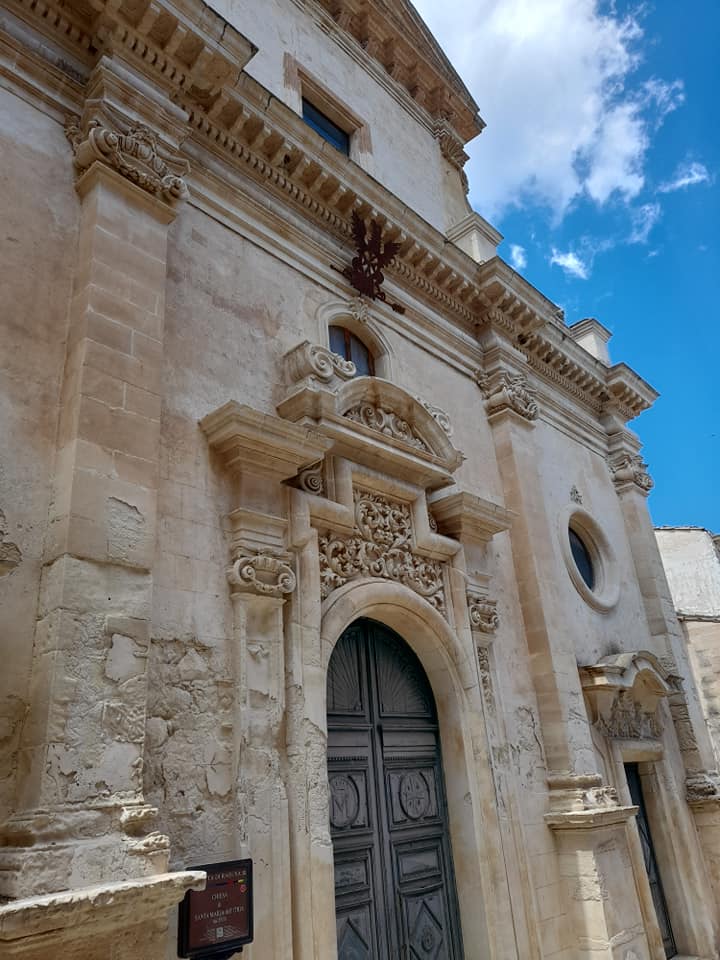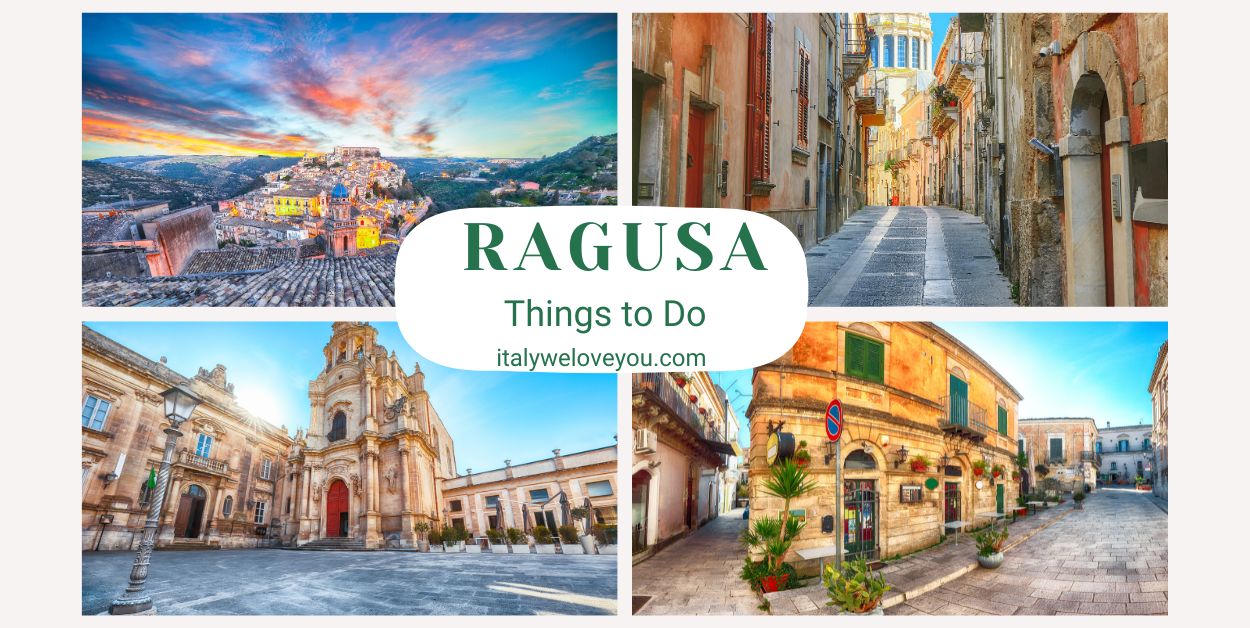10 Best Things to Do in Ragusa, Italy
Ragusa, in the heart of Val di Noto, is the southernmost city in Italy and is located in the southeast of Sicily, on the Iblei mountains. Ragusa is one of the destinations that cannot be missed on a trip to Sicily. The city is, in fact, an open-air museum, a treasure chest of Sicilian Baroque wonders.
Taking a trip to Ragusa means discovering a wonderful city made up of more than 50 churches and numerous buildings to be discovered. Elegant and refined, this city amazes us for its historical center, characterized by narrow streets and houses that seem to be built on top of each other.
In 1693, a devastating earthquake caused the collapse of many buildings in the city, and these were rebuilt a little higher, forming the part known as Ragusa Superiore (Upper Ragusa).
However, the wealthy aristocrats rebuilt the “old Ragusa,” now known as Ragusa Ibla. Although the two cities were divided for a long time, in 1927, they were unified into a single large city with a double face: Ragusa.
This makes present-day Ragusa a place with double personalities: Ragusa Ibla (the old city) and Ragusa Superiore.
The three bridges of Ragusa

Ragusa is also known as the city of bridges due to the presence of three bridges. The Ponte Vecchio (Old Gate), inaugurated in 1843, is the oldest one in the city.
Built-in Roman architectural style, it was intended to connect the San Giovanni district with the city that was developing around the convent of San Francesco di Paola.
In the eighties of the last century, it became pedestrian. At the same time, vehicular traffic was moved to the Ponte Nuovo (New Gate), also called “Ponte del Littorio,” which opened to the public in 1937.
Finally, in 1694 the Ponte Papa Giovanni XXIII, or Ponte San Vito, was completed, connecting the neighborhood del Carmine with the Capuchins. The bridges connect the northern part of the city to the southern part and offer a splendid panorama over the city.
Ragusa Ibla

Ragusa should be explored calmly; every alley, building, or street hides a detail to be discovered. Most of the artistic heritage, except the cathedral of San Giovanni Battista and some eighteenth-century palaces, is located in the old quarter of Ibla.
There are over fifty churches in the Ragusa Ibla district alone, most of them in the late Baroque style.
Before entering the old part of the city, visiting the Cathedral of San Giovanni Battista, which is located in Ragusa Superiore, is recommended.
It was designed in 1760 by two local architects and is rich in Baroque decorations. What strikes me the most inside the church are the fourteen columns in Ragusan stone and the floor alternating with white limestone.
Duomo of San Giorgio

Along the beautiful and ancient road that descends towards Ragusa Ibla, a wonderful staircase of 340 steps will lead you into an intricate network of streets and alleys.
Here you can visit the Cathedral of San Giorgio, one of the most beautiful expressions of the Baroque in the world. The ancient church stood at the city’s eastern end, where the ancient portal still stands.
Inside you will find the stained glass windows from 1926 depicting the thirteen episodes of the martyrdom of St. George.
Portal of San Giorgio

Next to the church is the Portal of San Giorgio, the symbolic monument of the city of Ragusa built in the Gothic-Catalan style in the first half of the 13th century as part of the church of San Giorgio, which has now disappeared.
Santa Maria dell’Itria

Among the most beautiful places in Ragusa, the blue dome of the church of Santa Maria dell’Itria undoubtedly stands out.
An octagonal drum is under the cobalt blue dome with eight terracotta panels decorated with colorful designs.
The church is located in the old Jewish quarter of the city, and following the signs for the viewpoint, you can reach a panoramic place of the city.
Santa Maria Delle Scale

Also, pay a visit to the ancient church of Santa Maria delle Scale, which is located between Ragusa Ibla and Ragusa Superiore: it is one of the few examples of Gothic architecture that characterized the city before the 1693 earthquake. so scenic that it is an unmissable stop on this itinerary in Ragusa.
From the square in front of the church, you can admire the historic center of the city and the dome of the Cathedral of S. Giorgio.
Zacco Palace

In addition to the numerous churches in Ragusa, you can see elegant and beautiful buildings, such as the Zacco Palace, located in Upper Ragusa and was built by Baron Melfi. Today the building is the seat of the Museum of Ragusan Traditions.
Schininà di Sant’Elia Palace, instead, is the largest palace in Ragusa; it was built at the end of the 18th century by baron Mario Leggio Schininà, the first mayor of Upper Ragusa while the Sortino-Trono Palace was built in 1778 on the part of the walls of the ancient castle: from here the view over the valley is wonderful.
Church of the Santissime Anime del Purgatorio

Also worth visiting is the Church of the Santissime Anime del Purgatorio. This church is one of the few that survived the earthquake of 1693.
The façade is in Baroque style, but the real beauty of this place of worship is the marble interiors and the large painting “Souls of Purgatory” dating back to 1800 by Francesco Manno.
Chancellery Palace

The Chancellery Palace is one of the 18 monuments of Ragusa, a UNESCO World Heritage Site. It is located in the oldest part of the city and is made in a refined Baroque style. Passing under the arch to the left of the building, you can admire the bluebell tower of Santa Maria dell’Itria in the distance.
Continuing along Via Duomo, you reach the church of San Giorgio, with the entrance to the cathedral preceded by a long staircase. Crossing the Piazza del Duomo, full of restaurants and small shops, on the right is the Church of San Giuseppe.
Continuing the city tour, visit the most beautiful traditional shops; here, you will find painters, restorers, and ancient craftsmen. It is worth entering the Sicilian Cart workshop, where you can admire the ancient art of repairing ancient Sicilian carts.
Ibleo Garden

In Ragusa, we also find the Ibleo Garden (or Villa Comunale), a large green park overlooking the Irminio Valley. The Capuchin friars wanted this garden.
The construction dates back to 1858 and is attributed to three wealthy notables and the citizens of Ragusa, who offered their labor for free.
The garden is the oldest in Ragusa, covering over 15,000 square meters. It is characterized by the presence of important Mediterranean plants, but there are also some exotic specimens, such as the cedars of Lebanon and the pepper tree.
The visitor who enters the main entrance is greeted by the avenue of palm trees, so-called because fifty palm trees flank it. The garden’s perimeter is bordered by an elegant balcony overlooking a beautiful landscape. Some fountains also enrich the garden, among which one has the shape of Sicily.
Read also: Beautiful gardens to visit in Italy.







